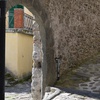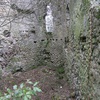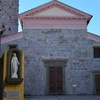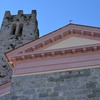Casoli
The settlement of Casoli Val di Lima is situated on high ground in the shadow of the hill of Tanette, a rocky outcrop of the northern slopes of Mount Memoriante.
Only a few remains of the walls of the medieval castle remain visible today. The building was narrow and elongated as required by the very form of the high ground, with a secondary circular wall circuit along the northern front and a small circular tower. The oldest fort there, built with a special technique that appears in a few other constructions of this kind in the Upper Serchio Valley, can be dated to the 11th to 12th centuries.
Among places of note is the Church of San Donato, documented for the first time in 1180. Of the original structure of the church, in the Romanesque style, traces remain recognizable in the bell-tower and in some portions of walling. Inside, within the three naves, is the 14th century baptismal font and some paintings of the 17th century.
A dirt track leads to the ruins of the Church of St. Andrew, on the hill of the same name near the ancient settlement of Lacu. The small village, mentioned as early as the 10th century, did not have efficient defences for its population. This dramatically influenced its future and over the centuries, both because of clashes between the towns and the plague, the town of Lacu was gradually abandoned in favour of other neighbouring towns.
Historical notes
The construction of the Castle of Casoli can be traced back to before 1180, the date of the first written record, when several local lords, connected to the powerful Porcaresi family, took the initiative of starting the military construction. Later it came under the jurisdiction of the rural community of Casoli and then into the hands of the Lupari family, who improved its fortifications. When the nobility was banished at the hands of Castruccio Castracani, Casoli and its fortress came under the City of Lucca and became part of the Vicariate of Val di Lima.
In 1337, during the conflict between Florence and the Scala family, the fortress of Casoli was besieged and damaged by the Florentine armies. As a result of this raid it was ordered to repair the door and equip the tower with stones in great quantity. It was also established that a spur and a wall be built “bonum et sufficientem et merlatum”, “good, sufficient and embattled” and in only eight days. Niccolo Fortebraccio managed to occupy Casoli, but only by making a peaceful agreement because, as stated by the Florentine Commissioner of Pescia, it was an "impregnable fortress". Casoli returned from 1369 under the government of Lucca, a situation that lasted for decades to come.












